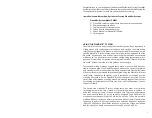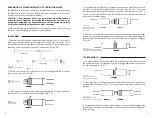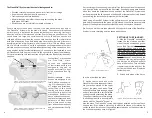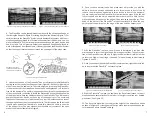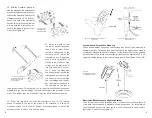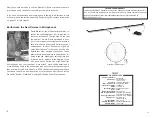
Congratulations on your purchase of the innovative Earthworks Touring PianoMic
™
System. We know that you will be thrilled with the results you will achieve using the
Touring PianoMic
™
System for both live performance and recording.
Items Enclosed with your New Earthworks Touring PianoMic
™
System:
PianoMic
™
System Model PM40T
2 – PianoMic™ telescoping bars with attached microphone heads
1 – Microphone electronics box
1 – Leather pouch for electronics box
2 – Felt pads with adhesive backing
1 – User’s Manual for PianoMic™ System
1 – Carrying case
USING THE PIANOMIC
™
SYSTEM
The majority of those who purchase the PianoMic
™
System have experience in
miking pianos with conventional microphones, and may find the close-miking
techniques described in this Manual to be unconventional. Please keep in mind
that the PianoMic
™
System utilizes a number of new technologies and that the
PianoMic
™
microphones work and perform much differently than conventional
microphones. The typical practices for piano miking using conventional micro-
phones will most likely not apply when using the PianoMic™ System. With the
PianoMic
™
System the rules for miking pianos have changed.
Conventional miking practices suggest that a piano must be miked from out-
side to achieve a good sound, and that a good piano sound cannot be achieved
with closely placed microphones inside the piano, especially with the lid closed.
When you listen to the incredible results achieved using the PianoMic
™
System
(at full-stick, half-stick or lid closed), you will realize how unique and ground-
breaking it actually is. As the PianoMic
™
System changes many of the conven-
tional rules and methods of miking pianos; we strongly suggest that you start
by following our guidelines first. Afterwards, if you want to experiment, you can
take it from there.
The Earthworks PianoMic
™
System incorporates a number of proprietary
technologies that allow this method of close-miking pianos to achieve re-
sults that have previously not been possible. This improved performance
has been accomplished by using specially designed High Definition Mi-
crophones created specifically to work inside a piano. These are carefully
matched Random Incidence omni microphones with extremely fast impulse
response, very short diaphragm settling time, extended frequency response
(4Hz to 40kHz), near perfect polar response, high current Class A amplifiers
and the ability to handle sound pressure levels up to 148dB SPL.
1
Summary of Contents for PM40T
Page 8: ...Notes 12...


